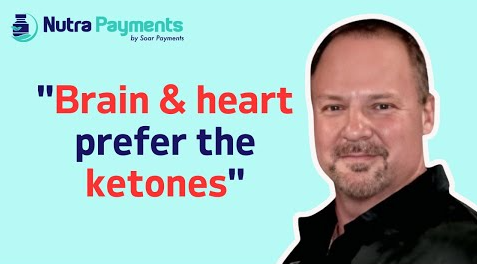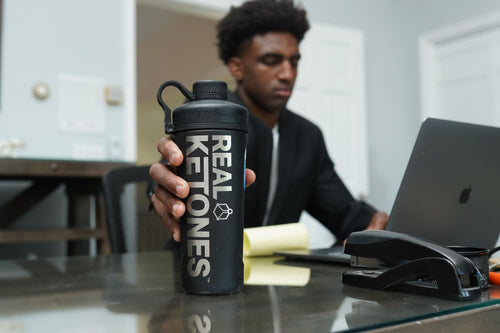What is the keto diet?
The keto diet is very low carb, moderate protein, and high-fat diet that allows the body to fuel itself without the use of glucose or high levels of carbohydrates. A keto diet is known as a low carb diet, where the body generates ketones in the liver to be used as energy. It is also referred to as the ketogenic diet, low carb diet, and low carb high-fat diet. A keto diet helps people to burn fat more quickly and effectively.
Many people have already experienced its many benefits for weight loss, health performance, and body maintenance. The keto diet is useful for weight loss, lower blood sugar, regulated insulin levels, and less hunger. The diet also controls and limits the body's cravings for sugars and carbs.
On the keto diet, fats should replace the number of cut carbs and deliver approximately 75% of your total calorie intake. This carb reduction forces your body to rely on fats for its main energy source instead of glucose. This process is known as ketosis. Research shows that keto diets are significantly more effective for weight loss than low-fat diets. Additionally, keto diets reduce hunger and increase satiety, which can be helpful when trying to lose weight.
However, the longer someone remains on the low-carb keto diet, the body will go through what is known as keto-adaptation and will become more efficient at burning fat and using ketones for fuel. This adaptation plays an important part in the body becoming more efficient at burning fat during exercise.
Types of keto diets:
There are three types of keto diets, that focus on the main goal of high fat and low carb intake.
- Standard Keto Diet (SKD): It means 20-50 grams of net carbs per day.
- Targeted Keto Diet (TKD): It ranges from 20-50 grams or less of net carbs taken 30 minutes to 1 hour before exercise, best for athletes with high-intensity activities.
- Cyclical Keto Diet (CKD): Eating low-carb keto for several days, then eating higher-carb for a couple of days. Other than this change, you can continue with the standard keto diet ratios during the rest of the day, and a normal keto diet should be good for low or moderate aerobic, flexibility, and stability exercises.
Things to remember when following the keto diet:
1. Stop worrying about the negative connotations with fat
Fat is the main source of energy on the keto diet, so make sure you are feeding your body enough of it. You do not have to lose weight on keto diet through starvation. Becoming fat-adapted is the most effective way to lose weight and keep it off while on the keto diet.
2. Drink more water
It is crucial to stay hydrated while on the keto-diet, especially during the beginning stages and throughout the keto flu. Maintain steady drinking habits throughout the day. Consistent water intake will help to regulate many of your body functions and help control hunger.
3. Don't forget about exercise
Consistent exercise is a part of any balanced lifestyle, especially if your goal is to lose weight. If you want to get the most out of your ketogenic diet, consider adding at least 30 minutes of exercise a day. Even a short walk can make a difference and help to regulate your weight loss and blood sugar levels.
4. Restrict your protein intake
Many people think that protein is still a fundamental food group in the keto diet, but just like carbohydrates, protein should be limited and monitored on the keto diet as well. Keep in mind that oo much protein can lead to lower levels of ketosis. Ideally, for weight loss, you want to take protein between 0.6g and 0.8g per pound of lean body mass.
5. Avoid snacking
You will notice weight loss much sooner if you can avoid snacking, which causes insulin spikes throughout the day. The fewer insulin spikes you have, the quicker you will lose weight. Unnecessary snacking may lead to stalls or slow in weight loss, so keep this in mind when you reach for that midday candy bar.
6. Know what to drink
As we already mentioned, water is the best possible drink for hydration and should be consumed consistently throughout the day. If you need to incorporate another beverage choice, choose tea or coffee. Avoid sweeteners with these drinks, and if you are completely desperate for a sweet drink, add a dash of stevia.
7. Understand Supplements
Supplements are not necessary on the keto diet, and you can see results without any over the counter or health products. Although they are not necessary, they can help you to get over some of the major roadblocks that many people face throughout their keto diet journey.
Tips for starting the keto diet
We recommend that when you start the keto diet, you don't just dip your toes in, you jump in head first and completely commit to the diet ratios right off the bat. This is the most effective strategy because when you tease your brain with smaller intakes of carbs over time, it will take longer to become fat-adapted and enter into ketosis. Starting slowly can also drag on the keto flu and can cause discouragement, and we want you to feel your best as soon as possible.
Keep in mind the ratios at the beginning of your diet. The primary objective when starting the keto diet is to restrict carbohydrates to 20 digestible grams per day. Remember to consume plenty of fiber, and keep your protein at or below 0.45 grams per day. If you want to lose weight, aim for 1 gram of protein per kg of your target weight.
Here are some tips to help make the transition as painless as possible.
Make a keto diet plan to make this transition easier for you. Taking the time to create an eating plan before starting the keto diet will help you to stay on track even on your hardest days. Keep high fat and low carb foods on hand at all times so you always have something to reach for in your more vulnerable moments.
Gain some inspiration with keto-friendly recipes. Sometimes it can be a challenge to create a well-balanced meal on your own. When starting the keto diet, you may also need to lean on different ingredients that you don't normally use in the kitchen. t is required to get into ketosis, due to the high-fat consumption. Increasing your intake on high-fat foods such as coconut oil, heavy cream, and cheese can make cooking easier and give you the full flavor you need in meals to stay satiated longer.
Make an approved list of keto-friendly foods. Having this list will make it easier to follow the diet. We recommended that you check food labels when shopping to identify any hidden added sugars, and eliminate these from your diet.
Consider starting a keto diet with a short period: Fasting depletes carbohydrate stores and can accelerate ketone production.
Avoid some of these high-carb foods for best results:
- Bread and baked goods
- Grains and grain products
- Sweetened beverages
- Sweets and sugary foods
- Grains and grain products
- Starchy vegetables like potatoes, sweet potatoes, butternut squash, corn, peas, and beans
- Fruits like citrus, grapes, bananas, and pineapple
- High-carb sauces (check out our keto-friendly condiments, here)
- Alcoholic beverages (check out our keto-friendly alcoholic drinks, here)
Though carbs should be restricted, low-glycemic fruits such as berries can be enjoyed in limited amounts as long as you are staying in a keto-friendly range. Make sure you choose healthy food sources and steer clear of processed foods and unhealthy fats. Lastly, consider using urine strips to check your ketone levels to ensure you are maintaining ketosis. Learn more about checking your ketone levels, here.

 ACCOUNT
ACCOUNT
 CART
CART





